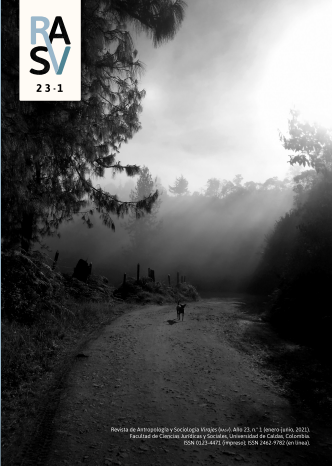Autores/as
Resumen
Este artículo propone analizar cómo el concreto está implicado en la transformación del espacio público en el Perú provincial. Si bien el concreto mejora la capacidad de un estado para producir estructuras confiables y predecibles, también hay límites significativos en relación con su capacidad para la conectividad tanto en el ámbito material como social. La atención etnográfica a la dinámica relacional del concreto revela cómo su promesa de operar como un material genérico, homogéneo y, sobre todo, predecible, se ve constantemente desafiada por la
inestabilidad y la heterogeneidad de los terrenos a los que se aplica. La imagen de poder que ofrece el concreto está, por lo tanto, comprometida, ya que la estabilidad y la previsibilidad de esta sustancia sólo es segura si está rodeada e incrustada en relaciones específicas de cuidado.
Palabras clave
Citas
Bensaude-Vincent, B. y Stengers, I. (1996). A History of Chemistry (Trad. D. van Dam). Cambridge, MA: Harvard University Press.
Cohen, J. y Moeller, M. (eds.). (2006). Liquid Stone: New Architecture in Concrete. New York: Princeton Architectural Press.
Coke, J. (1999). President’s Memo: South America Visit, American Concrete Industry, 24 de febrero de 2009. Recuperado de http://www.concrete.org/about/ab_presmemo_coke11.htm.
Colloredo-Mansfeld, R. (1994). Architectural Conspicuous Consumption and Economic Change in the Andes. American Anthropologist, 96(4), 845-865.
Dumez, H. y Jeunemaître, A. (1998). The Unlikely Encounter between Economics and a Market: The Case of the Cement Industry. En M. Callon (ed.), The Laws of the Markets (pp. 222-243). Oxford: Basic Blackwell
Gandy, M. (2002). Concrete and Clay: Reworking Nature in New York City. Cambridge, MA: MIT Press.
Gose, P. (1994). Deathly Waters and Hungry Mountains: Agrarian Ritual and Class Formation in an Andean Town. Toronto: University of Toronto Press.
Gurmendi, A. (2001). The Mineral Industry of Peru. US Geological Survey Minerals Yearbook, 24 de febrero de 2009. Recuperado de http://minerals.usgs.gov/minerals/pubs/country/2001/pemyb01.pdf.
Harvey, P. (1997). Peruvian Independence Day: Ritual, Memory, and the Erasure of Narrative. En R. Howard-Malverde (ed.), Creating Context in Andean Cultures (pp. 21-44). Oxford:
Oxford University Press.
Harvey, P. y Knox, H. (2009). Abstraction, Materiality and the ‘Science of the Concrete’ in Engineering Practice. En T. Bennett y P. Joyce (eds.), Material Powers: Cultural Studies, History and the Material Turn (pp. 124–141). London: Routledge.
Jones, P. (2006). Ove Arup: Masterbuilder of the Twentieth Century. New Haven, CT: Yale University Press.
Mukerji, C. (2006). Tacit Knowledge and Classical Technique in Seventeenth-Century France: Hydraulic Cement as Living Practice among Masons and Military Engineers. Technology and Culture, 47(4), 713-733.
Orlove, B. (1998). Down to Earth: Race and Substance in the Andes. Bulletin of Latin American Research, 17(2), 207-222.
Tafunell, X. (2007). On the Origins of ISI: The Latin American Cement Industry, 1900– 30. Journal of Latin American Studies, (39), 299-328.
Taussig, M. ([2004]2013). Mi museo de la cocaína (Gnecco, C., Trad.). Popayán, Cauca: Universidad del Cauca.
Tsing, A. (2005). Friction: An Ethnography of Global Connection. Princeton, NJ: Princeton University Press.
Wagenaar, C. y Dings, M. (eds). (2005). Ideals in Concrete: Exploring Central and Eastern Europe. Rotterdam: NAi Publishers.

 pdf
pdf
 FLIP
FLIP



















